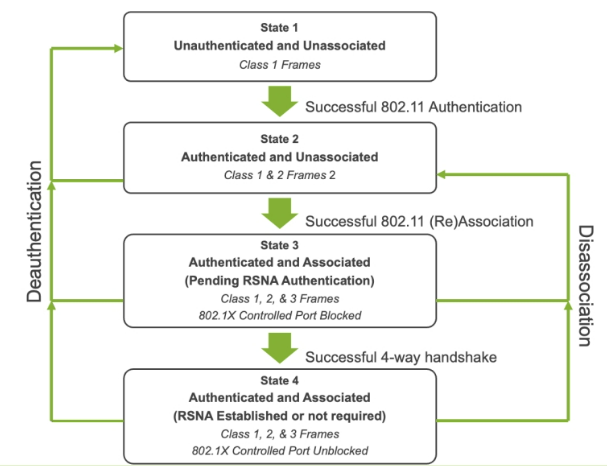EMAIL SUPPORT
dclessons@dclessons.comLOCATION
US802.11 State Machine & AP Discovery
802.11 State Machine
In wireless networking, we use a state machine based on the 802.11 standard as shown on the slide. This is the process that a client goes through when connecting to a wireless network and there are a few caveats in various scenarios, such as mesh and peer-to-peer. We will focus our discussion on a client connecting to an AP in a standard extended service set (ESS) that includes multiple APs connected to a common distribution system providing the same wireless service such as Mist. Mist tracks this process and the state machine and provides insights when a client successfully connects or fails to connect.

State 1 — Unauthenticated and Unassociated
The device starts in State 1 and can only send and receive class 1 frames. The client is not connected and is not part of a network.
- Unauthenticated — Has not yet been authenticated
- Unassociated — Is not associated with an access point
- Class 1 frames — Key class 1 frames are basic management; beacons, probe requests and responses to find available networks and simple control frames.
Transition to State 2
This occurs when a device successfully authenticates with an AP using open system authentication. In the past, shared key authentication (WEP) was an option but has been made obsolete and is no longer used or recommended due to security vulnerabilities. It may seem counterintuitive that there is no security at this point, but additional security can be enforced farther along in the process.
State 2 — Authenticated and Unassociated
Once authenticated, the client enters State 2. It can now send and receive both Class 1 and Class 2 frames. This is the framework for negotiation of detailed capabilities between the client and the AP, such as data rates, security protocols (protocol choice not credentials), and advanced features supported in 802.11n and newer standards.





LEAVE A COMMENT
Please login here to comment.